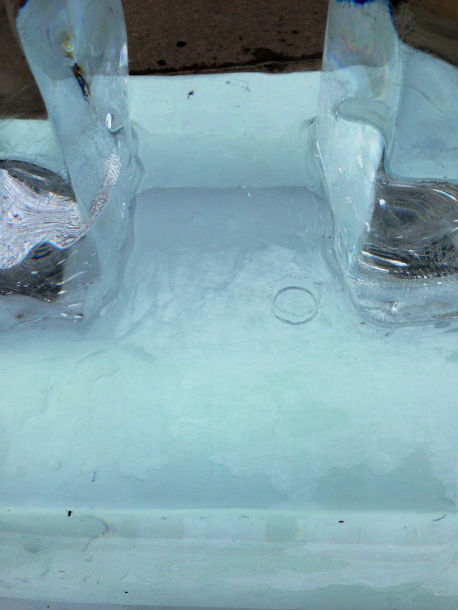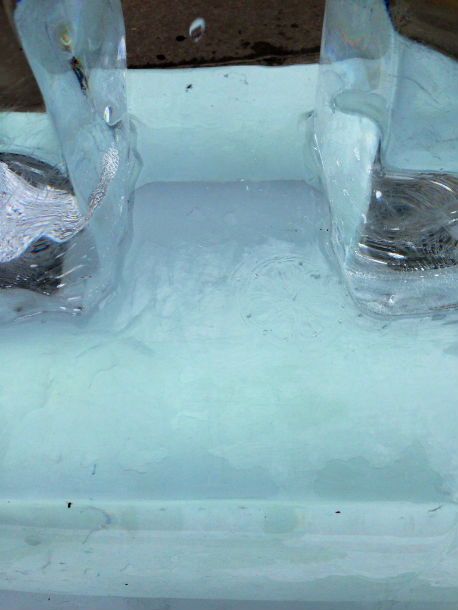Paula Z. Segal, Director, 596 Acres

At 11:21am, the T cracked. If you hadn’t been watching for it, you could have missed it. The rupture was completely silent. A crack like this, it’s irreversible.

In 2006, I stood on the deck of a cruise ship that had set out north from Ketchikan, Alaska, to get as close to the glaciers as possible. Huge sheets of ancient ice, 500 feet tall or more, slid off the edge, dwarfing our 1,000-person ship. “They’re making more at the top of the world, right?” a little boy standing nearby asked. “Yes,” his mom said, tentatively.
It’s clear that the disappearance of the glaciers is irreversible.

In 60 seconds, between 10:46 and 10:47am on September 21, 2014, I followed the path of 45 separate drops of water as they traveled through their separate airspaces towards the ultimate splash. It was an ocular workout, darting so fast, left to right to left to right. And I missed about half of them or maybe even 9/10ths. The Future is melting so fast, from so many points on its surface, my single set of eyes, yoked together, couldn’t follow each drop.
Overheard, 11:42am, at 23rd Street and Broadway, Manhattan: “It’s supposed to be, like, the future melting away.”
Yet there’s so much good news from the organizing planet. Groups of neighbors are creating rain gardens, installing solar panels, disconnecting from the carbon-generating infrastructure one tiny step at a time, all over the planet. Little drops that are hard to track. Impossible to see them all.
And at the same time, the virtual pipeline for bringing crude oil from North Dakota to Canada for refining is being constructed as individual bits – transfer stations, rail lines, metering devices, screens and knobs manufactured all over the world. Irreplaceable forests are are being cut down for fuel. And even “green energy” power generation is being centralized and built on indigenous people’s land, replicating the harms of our already existing centralized power infrastructure. With The Future melting so fast, it can be hard to focus.

Which drops will make the biggest puddles? What matters more, what we’re losing every day or what we stand to gain? I am choosing hope, enjoying the cool breeze that wafts from the Future, and the faces of children who discover they can see the City through its base. On a muggy day, The Future is refreshingly cold.


Save









